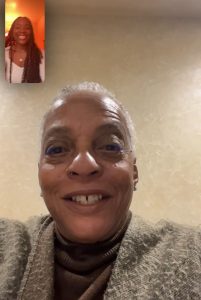For half a century, the Open Choice program has been creating an opportunity, allowing Hartford and surrounding suburban students to break educational barriers. South Windsor Public Schools proudly participates in this initiative, where Open Choice students face the daily challenge of early commutes for the promise of a better education.
The Choice program was born as a result of Sheff v O’Neil, the 1989 landmark Connecticut State Supreme Court Case that ruled Connecticut had a requirement to provide students an equal quality education. The court recognized that Hartford Public Schools were racially and economically segregated from its surrounding districts, while receiving less funds from the state than surrounding suburban schools.
Elizabeth Horton Sheff, leading the lawsuit with her son Milo as the plaintiff, sought to eradicate racial segregation in the state’s capital, ultimately resulting in the creation of the 39 Magnet schools and Choice programs in over 28 towns across Connecticut.
“I think that we have made great strides in providing choice for students, who wish [for] integrated education; however, it has been far too slow because there have been way too many children who wait and are on the waiting list and can’t get in,” Elizabeth Horton Sheff expressed in an interview with The Prowl.
The Open Choice program admits students on a lottery system, which according to state data for the 2022-2023 year had 2,297 Hartford students apply to the only 499 new spots available.
In towns like Enfield, Bloomfield, East Hartford, New Britain, Avon, Windsor, and Rocky Hill, the Open Choice program, funded by the State Department of Education, continues its mission to offer students from diverse backgrounds the chance to attend schools in different communities at no cost to their families. The program has steadfastly aimed to enhance academic achievement, reduce isolation, and provide quality educational opportunities over its multi-decade long history.
At South Windsor High School, where 130 Open Choice students contribute to the diverse and vibrant community, the challenge of commuting and waking up early is acknowledged.
“Being totally honest I have complained about the fact that I had to go to a

school further than my house when there was school up the street from me,” Tatiana Walton, a junior at SWHS and an Open Choice student, explained.
Yet, despite these challenges, the Open Choice program is celebrated for bringing invaluable experiences to its students, including programs at universities and for potential career fields.
“I was very fortunate to be able to attend Hartford Hospital’s Center for Education Simulation and Innovation program where I got a chance to learn and physically do what the doctors do on their patients but with robotics, which was a 10/10 experience for me since I am looking for work in the medical field in the future,” Walton told The Prowl.
The program’s support extends beyond experiences, offering scholarships and financial assistance for school-related needs. These supports allow Open Choice students to experience everything the school has to offer.
The Open Choice program “fits into my interest in what I would like to do in the future and clubs where I can meet new people from different backgrounds,” junior Kayla Bolling said.
Questions about the city of Hartford’s educational landscape and parental concerns do still arise, with some parents anxious about sending their children to school so far away. However, the general sentiment is one of gratitude for the opportunities provided by the Open Choice program, while also recognizing and combating disparities.
To further enhance the Choice program, advocate “for quality integrated education at all levels at your local district and [make] sure that your story is out there and [make] sure folks understand how quality integrated education benefited you,” Horton Sheff advised. She later elaborated that “If it wasn’t for Sheff, you [the Choice students] most likely would not be in South Windsor Schools because we kept the pressure on them to provide you guys with those opportunities. I intended to keep at it until we finish and continue making more strides and accomplishments.”
While some Open Choice students noted that they had initial thoughts of underrepresentation, those in high school have seen a positive shift with a growing sense of belonging as diversity increases, fostering a welcoming environment for students, which is a testament to the power of providing opportunities while simultaneously fostering conversations in the community around equity and access. The positive impact of the Open Choice program and Sheff v O’Neil is evident.
This story was originally published on The Bobcat Prowl on November 26, 2023.



































